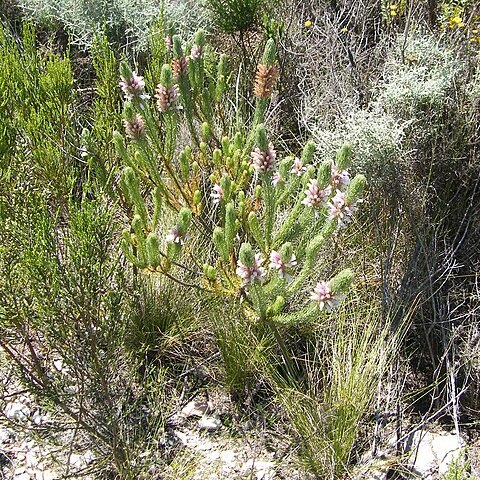Upright, rigid shrub up to 60 cm (2 ft) or so with rather few ascending, puberulous branches. Leaves 4-to 6-nate, 0.6-1.2 cm long, more or less spreading, linear, sulcate, glabrous or puberulous, shortly ciliate with sessile glands admixed. Flowers axillary in loose pseudo-spikes; peduncles 4-8 mm long, hispidulous; bracts median, foliaceous. Sepals 3- long, linear-lanceolate, foliaceous. Corolla 6-9 mm long, broad-urceolate or obconical, distinctly veined, minutely hispidulous, viscid, rosy to rosy-purple; lobes more or less upright, rounded from 1/4-2/7 the length of the tube. Filaments flat, coloured and of thicker texture below the anther; anthers included 1.5-2 mm long, subterminal, ovate, bipartite, deep red-brown, muticous; pore about 1/2 the cell. Ovary turbinate, shortly villous; style included; stigma capitate.
Erect shrublet to 1.0(-1.5) m. Flowers medium, narrowly bell-shaped to large, tubular, pink, purple, white, yellow, orange, red, greenish, sometimes bicoloured, sometimes slightly hairy, sometimes slightly sticky, white or pink to dull red.

